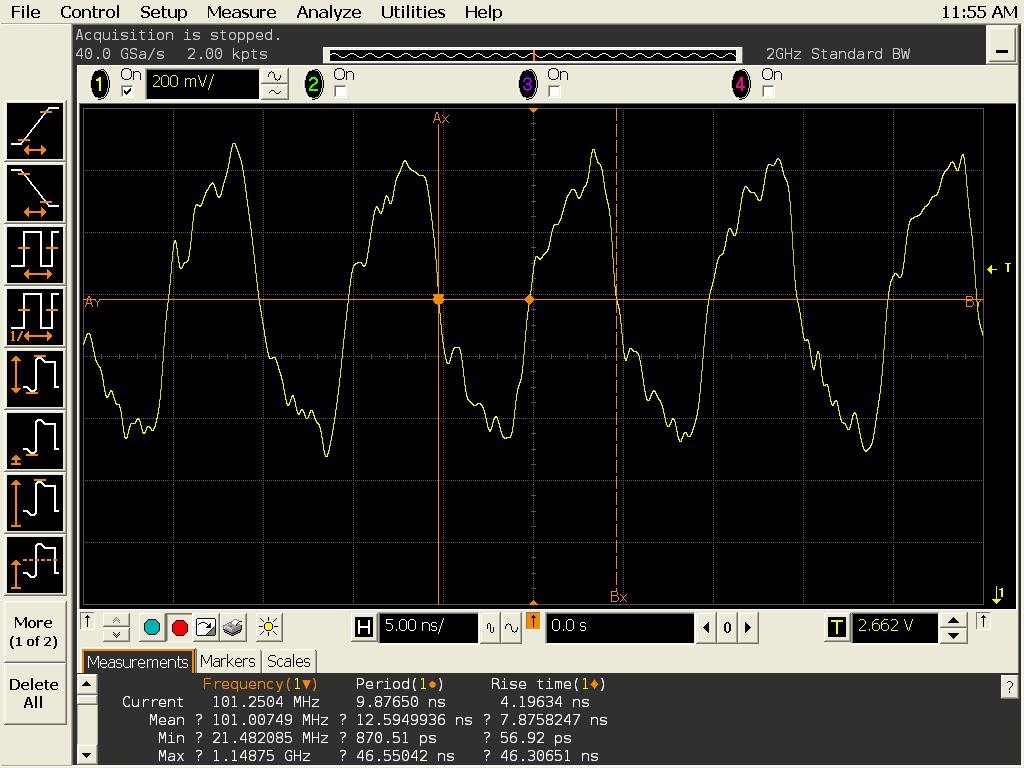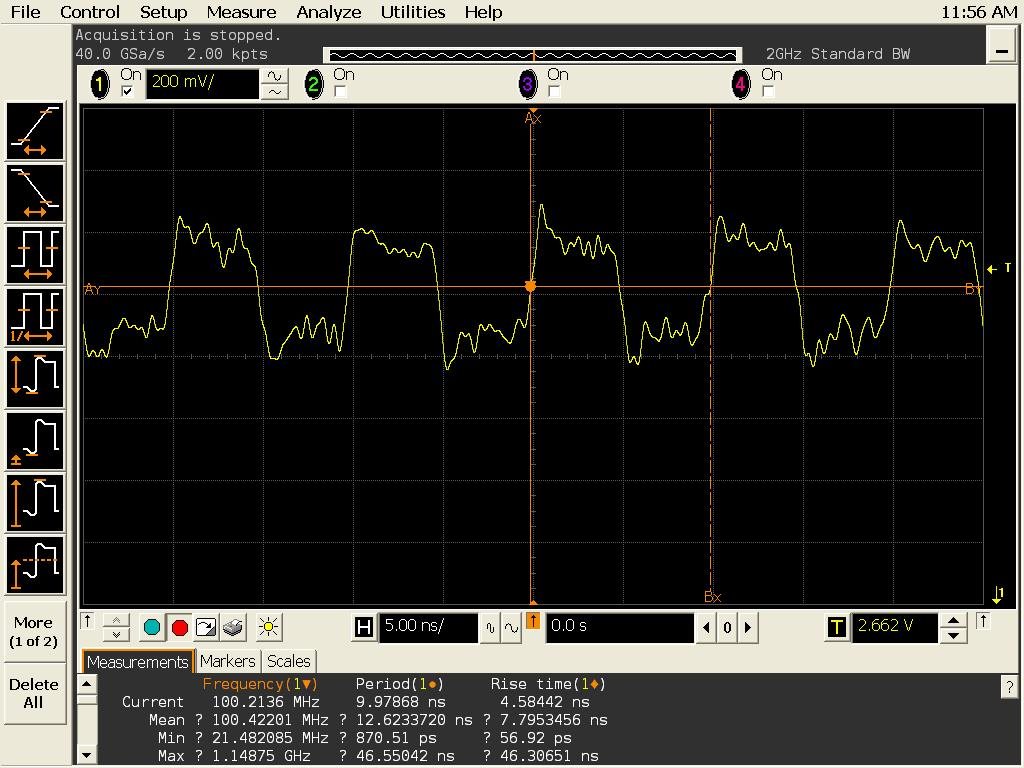Hi,
I check the differential clock of USB_CLK on K2H EVM.
I confirmed output clock of CDCM6208(U19: Pin #29).
Please refer to the following image, USB_CLK is not like pulse wave.
USB_CLK(CDCM6208(U19: Pin #29))
However, when I measured the DDR3A_CLK, it is observed pulse wave.
DDR3A_CLK(CDCM6208(U19: Pin #32)).
Why USB_CLK can not be observed pulse wave?
K2H EVM is not have AC-coupling capacitors at USB_CLKP/M.
Does differential clock of USB Phy not need AC-coupling?
Best regards,
H.U


